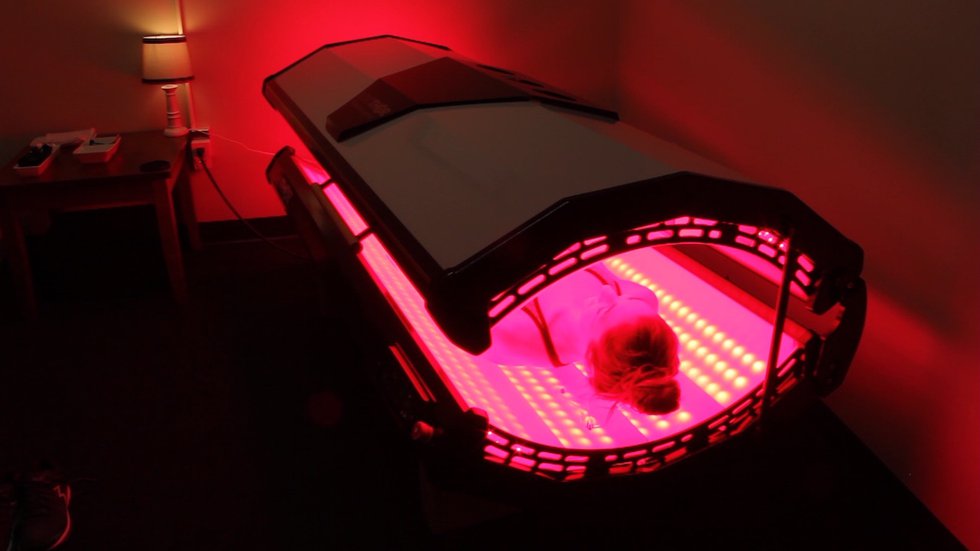Cryotherapy and light therapy reward discomfort.

Body pod at Total You Health.
Which seems harder to imagine—stepping into a machine that blows minus-250 degree cold vapors onto your body from the neck down for three to five minutes or sweating in a hinged bed with infrared lights above and underneath for 15 minutes or more? Both cryotherapy and light therapy are trending in the health and wellness industry, and both are making inroads in Virginia.
Cryotherapy is touted as a way to release endorphins, reduce inflammation, and enhance healing. At CRYORVA in Richmond, owner Kwame Donovan sees mostly athletes and those with chronic pain. “It’s always great to help people with acute injuries or after surgery,” Donovan says, “and to see how much the swelling has gone, faster than putting an ice pack on it.”
Unlike icing an injury with a pack or bath, cryotherapy is fast and dry. “It’s liquid nitrogen that is converted to cold vapors and rushes to your extremities and core,” explains Donovan, who does a session daily. “It’s fight or flight—you’re trying to stay warm, you do 360-degree turns, the music is on, and when you get out, the blood flows with increased circulation and you have high energy.”
Clients wear swimsuits with no metal from the neck down and are given long socks, booties, and gloves. They step into the round, leather-interior machine with eight options for cold and heat. Sessions are limited to just a few minutes. People with poor circulation or cardiovascular disease aren’t good candidates. Risks include rashes or frostbite.
Light therapy, also called photobiomodulation, uses red LED light and near-infrared light to heat the body and release toxins. At Total You Health in Roanoke, owner Linda Bailey says the light bed helps clients with traumatic brain injuries, Lyme disease, fibromyalgia, migraines, arthritis, and chronic pain. “When we experience oxidative stress,” Bailey says, “our cells do not have enough oxygen for the energy to heal itself. Mitochondria are sensitive to the light in this bed, and when exposed to that, they release toxins.”
People comment on the amount of energy they have when they get out, because their body is getting oxygen in the cells, she says. “People with chronic pain whose meds are not working are so willing to try this. And we have people trying to make it to the Olympics who use this in muscle recovery,” Bailey says. “To see someone with a brain injury who could not balance or talk now laugh and walk and engage in conversation again—to see that much recovery—is huge.”
In the body pod, clients are either unclothed or wear white underwear; goggles or a facemask are optional. Fans are positioned at the head and feet, the lid can be raised or lowered, and there’s a stop button. Music or other sounds can accompany the session. Reactions can include a rash or red ears, and medications that cause photosensitivity might limit a client’s time in the pod.
“We’ve had an overwhelming response,” she says, sparking plans to add a Richmond location this year.
This article originally appeared in our April 2019 issue.









